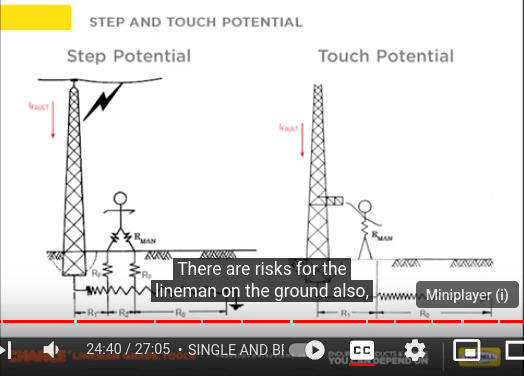If half of a 10kA ground fault followed the handle-mat connection with 10 ft of 2/0 copper (resistance = 0.000811 x 10), the voltage would only be 4 volts.
Would you care to re-cslculate with the addition of combinations of contact resistance included in the calculations.
After years of service, it may be dangerous to assume that none of the connections has developed increased resistance due to corrosion or damage.
Over time, connections between similar metals are particularly susceptible to increased contact resistance.
Long story but I was asked, (unofficially), for advice by an engineer investigating a fire in a building caused by a high voltage, (13.8 kV) superimposed on the 120:240 Volt distribution system.
The high voltage punctured the insulation in the 120;240 Volt wiring system in a building and the resulting arc started a fire.
The power was eventually cleared manually.
How could this happen and not trip something immediately?
All of the distributed grounds or pole grounds in the had become open or high resistance due to age neglect and lack of inspection/maintenance.
I much prefer portable equi-potential mats, that are installed and connected for each use.
There is only one connection to be made, and the lineman should be inspecting the mat and making the connection as if his life depended on it.
--------------------
Ohm's law
Not just a good idea;
It's the LAW!
![[nosmiley] [nosmiley] [nosmiley]](/data/assets/smilies/nosmiley.gif)
